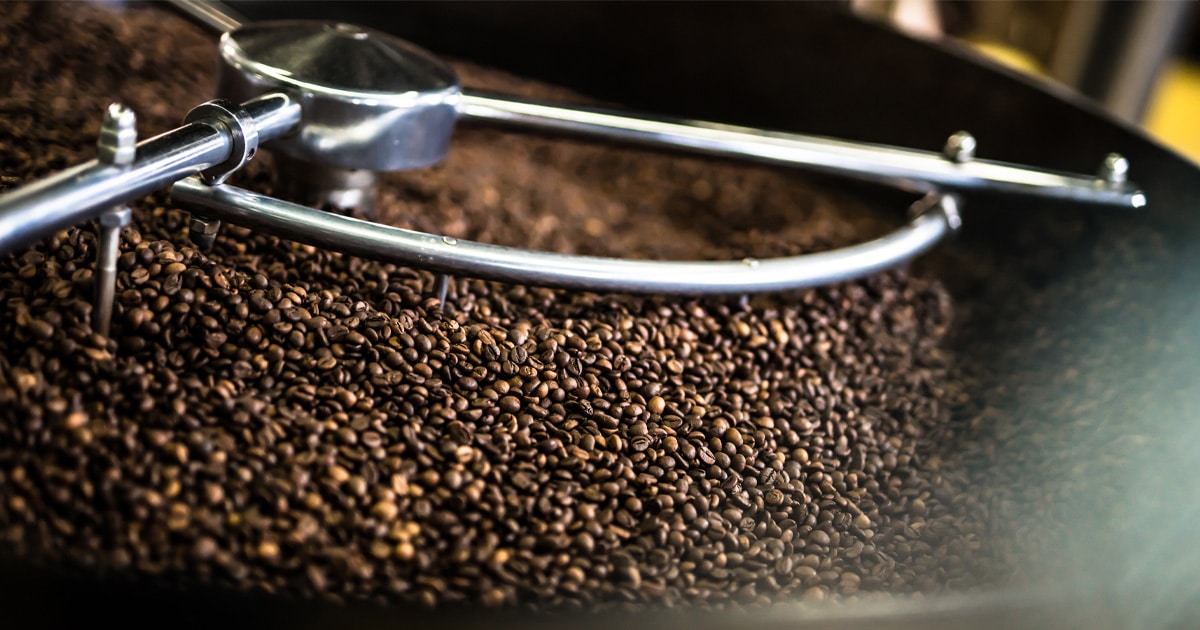While you may think that cup of coffee is just a simple morning pick-me-up, it’s actually been on a long journey before reaching that cup. We’re talking about the coffee roasting process and how it becomes that delicious brew we crave. Read our blog post below to learn what exactly the coffee bean goes through to transform into that beautiful cup of joe.
Grow the Coffee Plant and Exporting It For Coffee Roasting
Coffee plants can grow anywhere from five to seven feet tall and produce coffee cherries. Each coffee cherry usually contains two beans, which producers typically pick by hand and export before they are roasted. These beans are typically green in color and are kept without sacrificing the quality or flavor.
Once the coffee bean reaches the coffee roaster, that’s when the magic begins.
How Does Coffee Roasting Work?
There are many different styles and approaches to roasting coffee. You can either use different roasting “machines” ranging from a simple cast-iron skillet to fully automated, stainless steel convection ovens. Regardless of the method, the roaster tries to judge the product’s progress and how “done” the beans are based on visuals, smells, and temperatures.
Probably the most common way for coffee roasting is using a big industrial machine that tumbles the beans inside a heated drum. These machines offer fairly precise information on how much heat is being introduced to the roasting process and how the coffee is reacting. Additionally, these machines are run manually, meaning we have complete control over the batches and determine how the roast runs.
So, while precision and consistency are aided by the innovation of roasting machines, it’s heavily dependent on the experience of the roaster – meaning they need to be well-versed in interpreting the beans and becoming familiar with the equipment they’re working on.
How to Differentiate Between Coffee Roasts
As coffee lovers ourselves, we know how important it is to create a well-balanced roast. This involves understanding and differentiating between different roasts to ensure you get the best product possible.
Lighter roast profiles tend to emphasize the unique characteristics of the coffee, while dark roasts offer a more roasty character. Different styles of coffee roasting can change the flavor immensely. For example, depending on how you roast your beans, it can affect the level of acidity you experience in every cup you drink. Additionally, the way you roast your coffee can affect the level of caffeine in the brew.
Coffee Roasting Creates Different Roasts
While there is very little industry standardization in coffee roasting, there are similar characteristics across the types of roasts. For example:
- Light roast: This type of roast aims to balance the bean’s flavor and characteristics which are determined by its geographical location. They are often lighter in color and preferred by those who enjoy a more mild flavor. Typically, these beans are not roasted long enough for the oils of the beans to break to the surface, so they will not feel oily to the touch.
- Medium roast: Medium roasts aim to balance the flavor of the region while featuring the same non-oily characteristics as light roasts but with a stronger flavor profile.
- Dark roast: This type of roast spends the most time roasting, which results in a slightly oily surface. The dark roast boasts that bitter flavor people often associate with coffee.
Mokas Cafe Offers Coffee That’s Roasted to Satisfy
Mokas Cafe was founded in Salina, Kansas over 15 years ago. Since our opening, we strive to create a worthwhile experience for everyone who walks through our doors with friendly customer service and delicious food and brews. One way we do this is by offering our guests the most flavorful coffee around and this starts with our coffee beans. Visit our locations page to find the nearest cafe to you!

